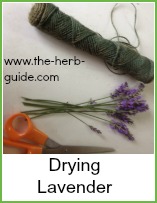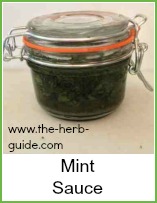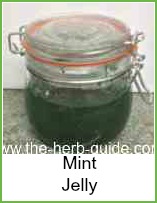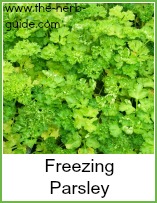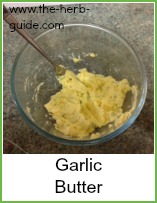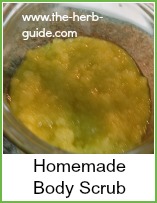- The Herb Guide Home
- Preserving
Preserving Herbs
As an Amazon Associate I earn from qualifying purchases
When it comes to preserving herbs, to decide on the best method, you need to ask yourself why you're wanting to preserve them.
It's fun to grow herbs indoors during the winter - and this is the best method of using herbs in those dark cold days when nothing much is growing.

You can try a sample lesson to help you decide if the Herbal Academy of New England is the right choice for you - follow the link below.
So, if you know what you're going to use them for, then you can decide on the best method for you of preserving herbs to use out of season - and there's a lot more choice than just drying herbs.
Plants like thyme, although they are evergreen, don't like being cut during the winter months - they're 'dormant' - that means they're not growing - and so by cutting their stems, you're interfering with their 'sleep' ;-) and they might die.

If you take an autumn cutting of thyme, then you might need to dry it to use it through the winter.
Or you could freeze it - or put it in oil or butter - or make a jelly.
It's hard to be general about advice and keep it interesting (Wake Up!) - so I'll outline the various methods here and then link out to more specific methods for each herb.
Ways of Preserving Herbs for Winter Use
Grow indoors - for some herbs, there's no alternative - you can't make pesto out of dried basil or deep fry frozen parsley.
Freeze - chopped into ice cube trays and turned into bags - second best method.
Freeze - in poly boxes - takes up a bit of space but is less messy than chopping into ice cube trays.
Dry - naturally - can be hard to get right depending on how fleshy the herb is.
Dry - oven- a bit easier than air drying but slower than microwave.
Dry - microwave - can also be hard to get right, but the failure is more immediately obvious and so you can have another go :-)
Make a jelly - I love mint jelly with lamb and sausages and liver and.... it's just great.
Make a sauce - mint sauce is a popular accompaniment to lamb - I prefer jelly as the vinegar in the sauce interferes with the taste of wine.
Flavour oil to use in cooking and salad dressings.
Flavour butter - limited preservation time, but you can freeze it for about three months or so.
So - the method of preserving herbs depends on what you want to do with them.
If you're just wanting to add the flavour to your cooked food, then freezing in cubes is by far the best method in my book. It just needs a bit of organising with ice cube trays and bags or boxes to store them in, but if you work out roughly how many times you might use thyme in the 6 months it isn't growing, then you won't be storing too much.


Some plants are best left to die down - mint for instance - but you can always take a few roots indoors in a pot if you want to use it during the winter.
Parsley too is good to grow indoors - if you want deep fried parsley, then a cube of ice or a teaspoon of dried just won't do - you need to have fresh.
If you're preserving herbs for medicinal or cosmetic use, say by making a tea or tissane, then dried or frozen is OK.
What would you like to see next?
I may receive a commission if you purchase something mentioned in this post. See more details here This will not affect the amount you pay.

